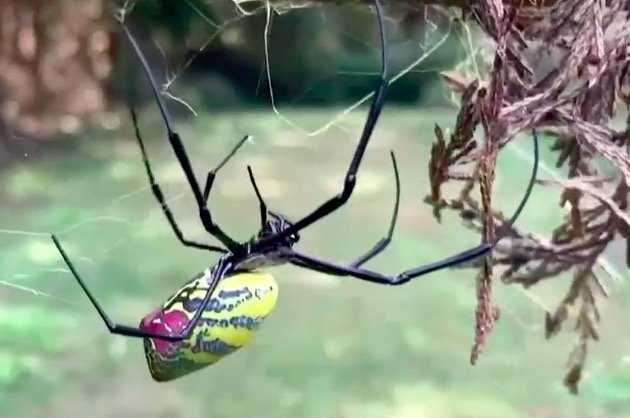'A big no': Huge, invasive parachuting spiders will begin to cover entire East Coast, experts say
The East Coast can expect to see webs around late May/early June
The East Coast can expect to see webs around late May/early June
The East Coast can expect to see webs around late May/early June
Giant parachuting spiders could show up along the entire East Coast of the United States, according to some scientists.
Originally from Japan, the 3-inch long Joro Spider made its way first to Georgia and has begun to slowly spread out.
Georgia residents have not been thrilled by the news.
“It’s disgusting,” said Anna Reed.
“A big no!” said Donneisha Match.
“Oh Lord Jesus,” said Gregory Lightfoot.
University of Georgia scientists have released a study saying the eight-legged residents are about to become even more prolific in Georgia and spread up and down the entire East Coast.
Video above: Spiders don’t need gravity to build webs in space
"It doesn’t have anything that’s controlling its population size in the new habitat, but it has perfect conditions to spread,” said Benjamin Frick, co-author of the study and an undergraduate at Odum School of Ecology, University of Georgia.
Scientists say it will continue to spread because of its ability to survive the cold.
“So in our experiment, we exposed them to a brief period of cold only for a couple of minutes at below-freezing temperatures and most of the Joros did just fine,” Andy Davis, co-author of the study and a research scientist Odum School of Ecology, the University of Georgia.
Researchers have found the spiders can travel using their webs like balloons or parachutes to ride the wind. But it’s unknowing humans who will spread them quicker.
“We had a Joro being found in Oklahoma, we tracked the person who made the observation and it turned out it was a student from here,” Davis said.
Joros don’t appear to have much of an effect on local food webs or ecosystems, Davis said.
And as menacing as the big spiders look, experts say they’re scaredy cats and you’re highly unlikely to be bitten by one.
“Its fangs are so small relative to most human skin that it probably won’t be able to get its fangs into you even if it wanted to,” Frick said.
Frick and Davis said if you are unlucky enough to be bitten by a Joro, its bite feels far less than a wasp sting, like a little pinch. They do have a little venom but like a bee or wasp sting, most will not need any medical attention. The East Coast can expect to see webs around late May/Early June, but the really big female webs come around the start of fall.


